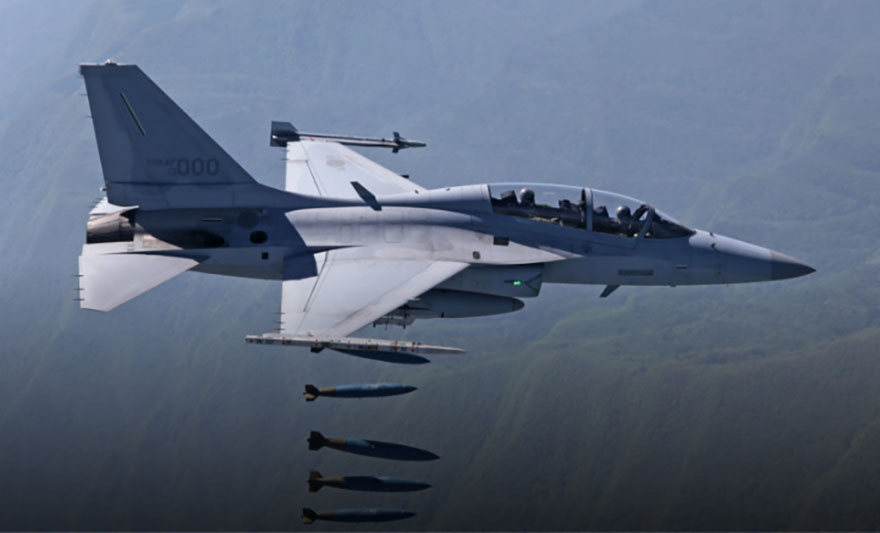
By Kenneth Chistiane L. Basilio and Chloe Mari A. Hufana, Reporters
SOUTH KOREA expects more defense contracts with the Philippines the latter tries to advance its military modernization efforts, Seoul’s top envoy to the Philippines said on Tuesday.
“We are expecting more,” South Korean Ambassador to the Philippines Lee Sang-hwa told reporters at an embassy event in the Philippine capital on Tuesday, but declined to provide details.
The Philippines has increasingly turned to South Korea as a key equipment dealer as it sets on a $35-billion (P2 trillion) military modernization program in the next decade amid increasing tensions in the South China Sea.
Manila’s Defense department had bought warships from South Korea-based HD Hyundai Heavy Industries Co., Ltd. as part of efforts to boost its fleet of mostly hand-me-down ships from the US and UK, many of which are aging and lack advanced weaponry.
Three missile frigates have been delivered so far, with another missile frigate and six offshore patrol vessels still in the works.
The Philippines in June signed a P39.8-billion contract with Korea Aerospace Industries for the purchase of 12 FA-50 fighter jets, as it eyes to upgrade its air force, whose arsenal mostly consists of turboprops. The Philippine Air Force already has 11 of the light fighter planes serving as the country’s most advanced jets.
“It is natural that Korea stands as a reliable partner of the Philippines, particularly when we face deepening global instability — one that is fraught with fragmentation and uncertainty,” Mr. Lee said.
The South China Sea has become a regional flashpoint as Beijing continues to assert sovereignty over almost the entire sea, a vital global trade route that is believed to be rich in undersea gas and oil deposits.
In 2016, a United Nations-backed arbitral tribunal in The Hague voided China’s expansive claims, ruling in favor of the Philippines. China, however, has rejected the ruling and continues to maintain a large presence in disputed areas, including Scarborough Shoal and the Spratly Islands.
“As fellow maritime nations, we share an abiding interest in peace and stability, as well as upholding a rules-based order in the South China Sea and beyond,” Mr. Lee said.
Meanwhile, the Philippines and India are considering holding joint naval drills in the contested waters, Colonel Xerxes A. Trinidad, chief of the Armed Forces of the Philippines public affairs office, told a news briefing.
Four Indian Navy ships are set to make a port call in the Philippines later this month, and there are plans to conduct a joint sail with the Philippine Navy in the South China Sea, Indian Ambassador to the Philippines Shri Harsh Kuman Jain said last week.
India has supplied advanced cruise missiles to the Philippines while advocating for a code of conduct in the disputed waters that aligns with international law.
The Association of Southeast Asian Nations and China pledged in 2002 to come up with a code of conduct on the South China Sea, a framework that seeks to prevent conflict through diplomatic means, but it has remained elusive due to slow progress. Manila hopes to finalize it when it hosts the regional grouping next year.
Like the Philippines, India has been entangled in border disputes with China along the Himalayan region. The two nuclear-armed nations share about 4,000 kilometers of border, much of which is contested.
In 2020, a skirmish between the neighboring countries erupted at the disputed Galwan Valley, leading to the deaths of 20 Indian soldiers and four Chinese troops, their first deadly military confrontation since 1975.
Also on Tuesday, Philippine Navy spokesman Rear Admiral Roy Vincent T. Trinidad said he expects China to increase its naval presence in the South China Sea after recent storms.
“The trend is after any weather disturbance, the numbers always increase,” he told a separate news briefing. “They go back to their regular, normal presence.”
The Philippine military early this month said Chinese presence at disputed shoals and atolls spiked to 49 ships in June, from the average of 29 China Coast Guard and People’s Liberation Army Navy vessels monitored per month in the first half.
‘COMMITMENT TO DETERRENCE’Meanwhile, the Philippines and the US reaffirmed their “ironclad” alliance as President Ferdinand R. Marcos, Jr., separately met with Secretary of State Marco Antonio Rubio and Defense Secretary Peter Brian Hegseth in Washington, DC on July 21 to discuss regional security, China’s growing assertiveness and expanding military cooperation.
The meetings highlighted the importance of the alliance in maintaining peace and stability across the Indo-Pacific region, US State department spokesperson Tammy K. Bruce said in a statement posted on the agency’s website.
“They reaffirmed their shared commitment to deterrence and to upholding freedoms of navigation and overflight in support of a free and open Indo-Pacific,” she said.
The high-level meetings come as Manila seeks stronger security guarantees amid rising tensions with Beijing in the South China Sea, while the US looks to bolster regional alliances to counter China’s growing military and economic influence.
Ms. Bruce said the two leaders “discussed efforts to advance the United States’ and the Philippines’ shared prosperity, including through the Luzon Economic Corridor, by strengthening supply chains and delivering economic growth to both countries.”
The Luzon Economic Corridor was launched under the administration of Joseph “Joe” Robinette Biden, Jr.
In a separate meeting on July 21, Mr. Marcos met with Mr. Hegseth, who called the Asia-Pacific region the US’ “priority theater.”
“Together, we must forge a strong shield of real deterrence for peace, ensuring the long-term security and prosperity for our nations,” Mr. Hegseth said during the meeting, according to a transcript from his office.
For his part, Mr. Marcos underscored the importance of the alliance in advancing the Armed Forces of the Philippines’ modernization and enhancing joint military exercises.
Mr. Marcos was in Washington from July 20 to 22, the first Southeast Asian head of state to visit the White House under Mr. Trump’s second term.